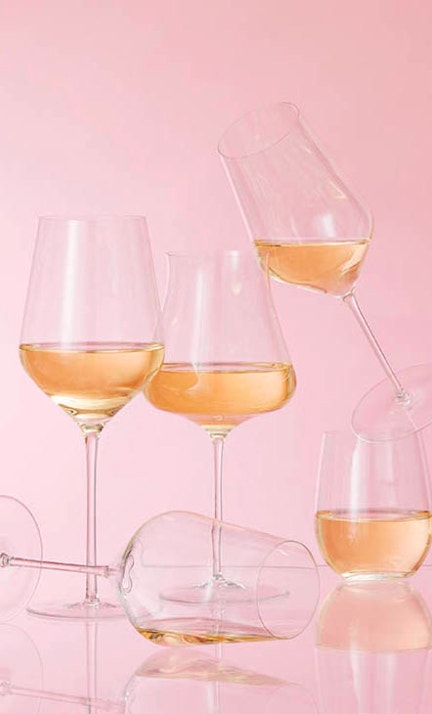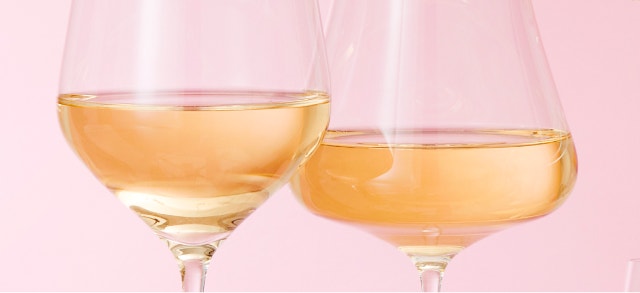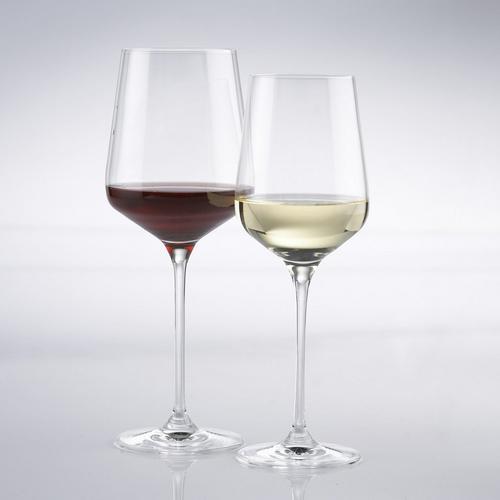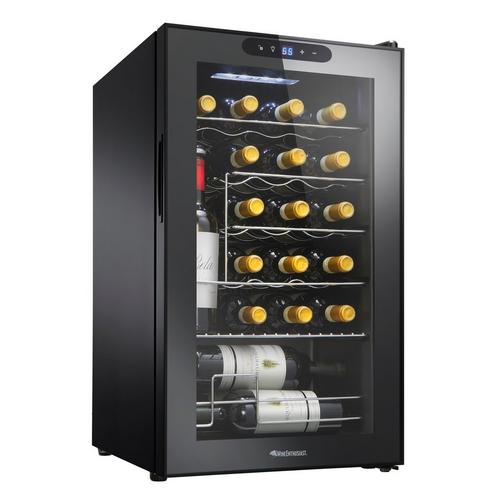Wine Enthusiast |
| The Changing Style of Israeli Wine Posted: 23 Jul 2021 04:30 AM PDT  The history of winemaking in the eastern Mediterranean stretches back millennia, but Israel‘s modern industry has hit its stride in the past several years. White wines have improved vastly in quality. Rhône varieties and hybrid grapes are edging out Cabernet blends. Indigenous grapes are starting to find commercial success. And winemakers who traveled abroad have returned open to experimentation. As a result, a wave of innovation has taken root in this diverse and vibrant Mediterranean country. This approach will likely guide the progress of Israel's wine industry through the 21st century. Here are the trends to watch.  White WineSeventy percent of the wine grapes grown in Israel are red, with Cabernet Sauvignon leading the way. However, the thirst for Israeli white wine both at home and abroad is growing. "It's like somebody flipped a switch and said, 'Wow, we live in a hot country, we really should be drinking cold white wine,'" says Joshua Greenstein, an executive vice president of the Israel Wine Producers Association trade group. Freshness and acidity are key, so the best examples are from high-altitude vineyards. Besides Chardonnay and Sauvignon Blanc, there are very good examples of Gewürztraminer made by producers that include Psagot, Jezreel, Tabor and Golan Heights Winery. Rhône-style whites like Recanati's Special Reserve white blend and Netofa's Roussanne have also made inroads. Rhône-Style Reds"Mediterranean varieties are the most suitable for our climate and terroir," says Gil Shatsberg, executive vice president of Recanati. "Early ripening grapes with the ability to maintain natural acidity in a hot climate offer a great advantage to making quality wines which match perfectly to our local cuisine." This includes both blends and varietal bottlings of Grenache, Syrah and Mourvèdre. High-quality examples of Syrah/Shiraz come from producers such as Ramot Naftaly Winery, Pelter Winery, Binyamina Winery, Shiloh Winery and Tulip Winery, while blends are a mainstay at Jezreel Valley Winery, Hayotzer and Dalton Winery.  Boutique WineriesThe four largest producers—Barkan Wine Cellars, Carmel Winery, Teperberg Winery and Golan Heights Winery—make up almost half of Israel's output of 40 to 45 million bottles per year. However, since the late 1970s, there has been incremental growth in proprietor-run craft wineries, which produce up to 30,000 bottles per year. Dr. Yair Margalit, who founded Margalit Winery in 1989, is considered the father of Israel's small-winery movement. These producers focus on quality, terroir and expression. There's also much experimentation in winemaking techniques, proprietary blends and grape varieties. Small producers like Kishor Winery, Agur Winery, Shvo Vineyards, Alexander Winery, Ephod Winery, Nadiv Winery, Odem Mountain Winery and Gush Etzion Winery are racing to the top of Israel's wine scene. Vines in the DesertOne of the driest wine regions in the world, Israel's Negev (Hebrew for "dry") first produced grapes about 2,500 years ago, grown by the Nabateans, a nomadic tribe who built stone dams to divert infrequent rains to their vineyards. Home to almost 40 wineries, this arid landscape wedged between Egypt and Jordan offers altitudes as high as 2,950 feet, which provide cold nights that preserve acidity. One of the region's leaders is Yatir Winery, founded in 2000 as a partnership between local growers and Carmel Winery. Its red wines are surprisingly bright, considering the vineyards' topography and climate. Another standout is Midbar, the Hebrew word for "desert." Winemaker Shachar Landman coaxes extraordinary levels of freshness out of parched soils for his red and white blends.  Native GrapesIsraeli winemakers cultivate ancient indigenous varieties like Marawi, Bittuni, Jandali, Baladi and Dabouki, long thought extinct. Recent discoveries by researchers like Elyashiv Drori of Ariel University have led to their rediscovery and propagation. Cremisan Winery, on the border of Israel and the West Bank, is one of the foremost producers of wines from native grapes. Sales of these wines benefit the Salesian Monks. Its winemaking team is made up of Italian monks under the watchful eye of consultant Riccardo Cotarella. Ido Lewinsohn, MW, head winemaker at Barkan Segal, also works with Marawi, while Teperberg Winery uses the native variety Dabouki in its Inspire White. ExperimentationAfter their compulsory military service, many Israelis travel abroad for a year before they come home and settle into a career. Those interested in winemaking find much to discover in Europe, the United States and Australia, and return home eager to experiment with new grapes or fermentation techniques. Yehuda Nahar, CEO and winemaker at Jezreel Valley Winery, produces wine made from Argaman, a cross of Souzão and Carignan. Argaman, which means "crimson" in Hebrew, was created by Israeli agronomists to produce a deeply colored wine, often added to inexpensive blends. However, Nahar and a few likeminded compatriots have made high-quality blends and varietal bottlings with the grape. At Segal, Lewinsohn has introduced methods like whole-cluster and native-yeast fermentation. While these techniques represent the traditional way of making wine, they had gone by the wayside as winemaking became an industrialized process.  Wines with a MissionMore and more consumers want to support brands that give back to the community, a trend not lost on the Israeli wine sector. Two exemplary wineries are Kishor and Tulip, both of which support those with special needs. Kishor is located in the Kibbutz Kishorit, a community for special needs adults. Members of the kibbutz are employed year-round, and a dedicated team is brought in for the harvest season. Kishor's tasting room features cheese and baked goods made by community members. Tulip winery was founded in Kfar Tikva, the "Village of Hope," home to adults with developmental and emotional disabilities. The residents participate and work in the winery, especially in the harvest and labeling of the bottles. Both wineries produce a variety of white and red wines. SustainabilityAt the forefront is Golan Heights Winery. In 2017, its vineyards became the first in Israel to become certified for sustainable winegrowing. The winery's barrel cellars, bottled wine warehouse and bottling hall are covered in solar panels. The winery claims that two-thirds of its energy usage is derived from the sun. Tabor Winery, under the direction of its general manager and head agronomist, Michal Akerman, has worked to reintroduce wildlife into its vineyard in order to restore the ecosystem with the use of sustainable growing methods. The winery's new logo features a barn owl, which symbolizes the return of a variety of wild animals and their importance to the quality of the soil. |
| 10 Zesty Albariños for Less Than $40 Posted: 23 Jul 2021 04:04 AM PDT  Albariño, known as Alvarinho in Portugal, is a white grape variety from Iberian Peninsula. It’s the principal grape in the crisp and refreshing wines of Rías Baixas and Vinho Verde. Like many varieties, it has also thrived in various climates and regions outside of its home. Albariños tend to be crisp with ripe fruit flavors, have bright acidity and a round mouthfeel, and are often meant to be consumed young. They’re perfect on hot summer days, or paired with the brininess of foods like oysters. Niner 2020 Albariño (Edna Valley); $25, 92 points. Brisk aromas of Asian pear and Pink Lady apple are broad but clean on the nose of this crisp bottling. There is fascinating tension on the palate, which pops with melon and green apple flavors, as a honeysuckle tone lingers on the finish. —Matt Kettmann Analemma 2018 Mosier Hills Estate Albariño (Columbia Gorge); $38, 91 points. This is exceptionally rich, with a floral top note and a core of ripe flavors of peach and tropical fruits. It feels heavier and bigger overall than its relatively low alcohol, and the lingering flavors come with accents of candied fruits and burnt caramel. It seems to be in a prime drinking window already. —Paul Gregutt Grosgrain 2020 Philips Vineyard Albariño (Walla Walla Valley); $24, 91 points. Examples of this variety are rare in the valley and Washington more broadly. This is fermented and aged in concrete egg, neutral barrel and stainless steel. Intriguing aromas of beeswax, wet stone and the underside of a pineapple are followed by elegant flavors that dance lightly on the palate. There’s compelling balance throughout. Editors' Choice. —Sean P. Sullivan Sling & Stone 2020 Gularte Vineyard Albariño (Monterey); $25, 91 points. Aromas of dried grass, lime peels and green-pear skins make for a light and easy entry to the nose of this bottling. Citrus flashes of lemon and lime juice lead into white-flower flavors, as the texture engages all corners of the palate. —M.K. Anselmo Mendes 2020 Contacto Alvarinho (Vinho Verde); $20, 93 points. Born and based in the Minho Valley, the Alvarinho is the native grape for Anselmo Mendes. This wine, made with skin contact, brings out a rich, textured side to the grape. It is ripe, dense and full of rich citrus flavors. Drink from 2022. Grape2Glass. Editors' Choice. —Roger Voss Aveleda 2020 Alvarinho (Minho); $15, 90 points. Alvarinho at its ripe and creamy best, this is bright with apple fruits that give the wine freshness. The mineral texture adds a touch of steeliness and complexity to a white that is very ready to drink. Aveleda Inc. Best Buy. —R.V. La Caña 2019 Albariño (Rías Baixas); $20, 90 points. Patented apple and green-melon aromas come with a hint of sea brine, making this Albariño appealing from the start. A rounded palate is braced by punchy acidity, while melon and apple flavors come with a welcome hint of wet stone and citrus. This is in prime condition, so drink now. Jorge Ordóñez Selections. —Michael Schachner Palacio de Fefiñanes 2019 de Fefiñanes Albariño (Rías Baixas); $33, 90 points. Briny apple aromas come with a dusty note, while this is both juicy and full on the palate, with lime-like acidity. Flavors of lime, green melon, apple and sea salt are appealing. On the finish, this feels lively and acidic, with a note of green herbs. Drink now. Kysela Père et Fils. —M.S. Pazo San Mauro 2019 Albariño (Rías Baixas); $22, 90 points. Aromas of wet slate, apple and peach hint at corn. A bouncy, lifted palate shows mild citric acidity, while this tastes of apple and nectarine along with a sprinkle of sea salt. A steady finish holds onto its core acidity, but it’s best to drink now. Torgar Group. —M.S. Bodega Garzón 2019 Single Vineyard Albariño (Uruguay); $30, 89 points. A yellow color along with aromas of dried cheese, citrus fruits and wet slate are round but bone-dry, while this feels medium to full in body. A mature mix of lemony citrus and white stone fruit flavors is backed by skins-based bitterness and hints of the nearby sea. Drink now. Pacific Highway Wines & Spirits. —M.S.
|
| You are subscribed to email updates from Wine Enthusiast. To stop receiving these emails, you may unsubscribe now. | Email delivery powered by Google |
| Google, 1600 Amphitheatre Parkway, Mountain View, CA 94043, United States | |



















0 comments:
Post a Comment